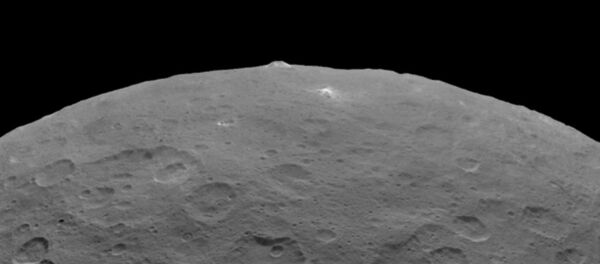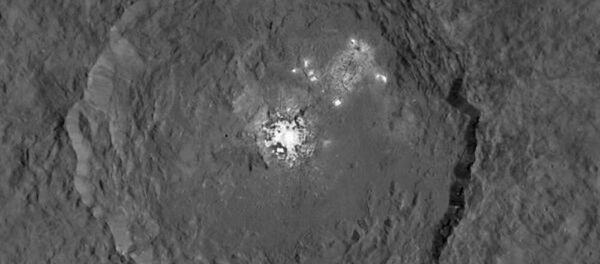At a close approach of only 12,000 miles away, positioned directly between Ceres and the sun, Dawn was able to snap excellent photos of the Occator Crater. Occator is the brightest spot on Ceres, and in recent years scientists have speculated that the shine from the crater is the result of the presence of sodium carbonate, taken as evidence of volcanic activity.
This makes Ceres the closest object to the sun to undergo cryovolcanism, a volcano that erupts cold volatiles such as water and methane (and sodium carbonate) instead of molten rock like our terrestrial volcanoes. So the theory goes, something smashed into Ceres and created Occator Crater, which also triggered the creation of a cryovolcano.
"The bright spots of Occator stand out particularly well on an otherwise relatively bland surface," NASA said in a release that accompanied the video.
Dawn launched in 2007 and arrived at the asteroid belt in 2011, with a pair of missions. First, it spent a year studying Vesta, a protoplanet that is the second-largest object in the asteroid belt with a surface area comparable to Pakistan. It then exited Vesta's orbit and made its way to its second and final object of observation: Ceres.
Ceres is the third largest object in the sun's habitable zone, after Mars and Earth. This means that it's possible for the planet to support liquid water: many astronomers believe that Ceres has a thin water vapor atmosphere, and others have argued that there may be an underground ocean of liquid water beneath its icy surface.
In February 2017, Dawn detected organics in one of Ceres's craters, which suggests underground volcanic activity. While it is highly unlikely for even simple life to exist on Ceres, astronomers continue to study the world to get a better idea of how organics can form on water worlds. Moons like Ganymede, Europa, and Enceladus are believed to have similar compositions as Ceres.
Dawn is the first human spacecraft to ever orbit Ceres, and in its two years of observation it has taught us much we didn't know about the smallest of our solar system&'s four dwarf planets. Initially, Dawn was to visit a third target but NASA decided against it. Instead, they are likely going to decommission the satellite late in the year, at which point it will become a permanent satellite of Ceres.






